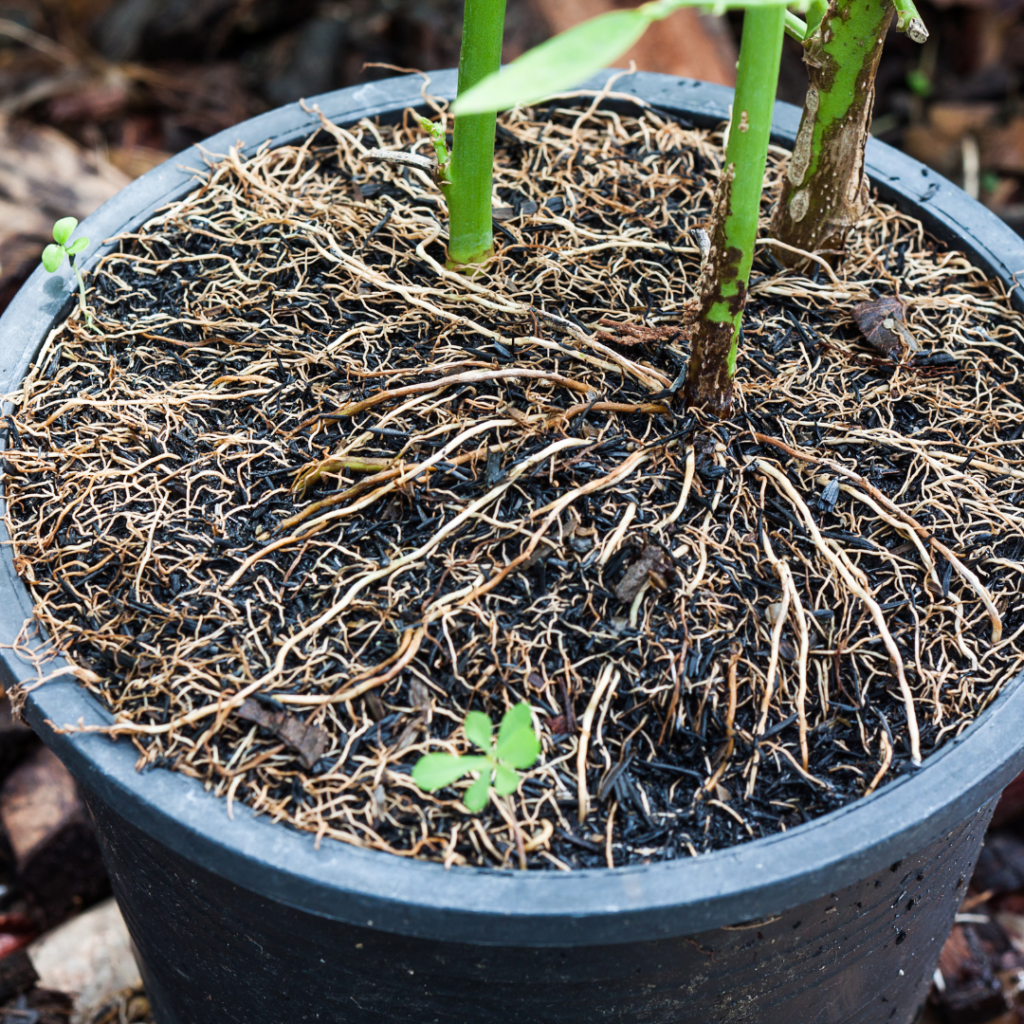Nurturing Roots: The Crucial Role of Soil in Preventing Root Rot
Ever since embarking on my gardening adventures a few years ago, root rot has been one of my longstanding nemeses. In my experience, treatments can be long and tedious and sometimes fail. However, over time, I have come to learn that the key to preventing root rot lies beneath the surface—in the soil. This blog will explore the crucial relationship between soil and root health and discuss how the right soil can be your plants’ best defense against the threat of root rot.
Using well-Draining Soil as a Strategy to Prevent Root Rot
The primary cause of root rot is excessive moisture around the roots. Purchasing quality potting soil or making a well-draining soil mixture will minimize these waterlogged conditions and allow water to pass through easily. By creating proper drainage, it prevents water from accumulating and creating a breeding ground for harmful pathogens.
Tailoring the Right Soil Mix to Meet Plant Needs and Prevent Root Rot
Various plants have different soil requirements. For example, some might need moisture-retaining soil, while others might require a sandier variety. In order to make your plants happy, research the plants’ specific needs and choose a soil mix that is congruent with their preferences.
Avoiding Soil Compaction
Compact soils, such as clay, can hamper water drainage and trap water around the roots. Opt for well-draining soils that facilitate water movement and also match your gardening goals. For example, gardening soil should probably not be used in container planting, as it is too dense and could yield compaction.
Container Cultivation and Selection to Prevent Rot Rot
If you’re growing plants in containers, select pots with sufficient drainage holes. Additionally, in larger pots, you can add items such as recycled cardboard packing materials. These organic additive can supplement the soil and also provide a more efficient water flow. Speaking of larger pots, when transplanting your green friends, make sure that you incrementally increase the size. Keep in mind, when small plants are placed in too large a pot, they are unable to quickly utilize the water. The resulting impact is that the soil remains moist for longer periods, and water can accumulate around the roots and cause root rot.
Aerating the Soil for Healthy Root Oxygenation
Roots need oxygen to thrive, and compacted or waterlogged soil can deprive them of this essential element. Opt for soil that promotes aeration. Well-aerated soil allows roots to breathe and fosters a healthier root system.
Developing and Maintaining Balanced Moisture Levels
Maintaining the right moisture levels will not only ensure that plants receive adequate hydration; doing so will also help fight against root rot. The right soil balance maintains an ideal equilibrium by ensuring that water neither accumulates around the roots nor dries out completely.
Conducting Regular Soil Inspection
Regularly inspecting your soil and looking for signs of compaction, poor drainage, and water-logging is an essential part of preventing root rot. Routine inspections will allow for timely intervention to prevent root rot.
Adding Soil Amendments for Additional Drainage
Incorporating soil additives like perlite and vermiculite can aerate the soil and allow essential oxygen to permeate the roots. These amendments can prevent root rot by making sure that the soil is not soggy and dense.
Establishing the right pH Levels for Preventing Root Rot
Different plants have varying pH preferences. The benefits of maintaining the right soil pH are multifaceted. An appropriate soil pH not only prevents root rot but also sustains the plants’ overall health. By researching the needs of your specific plants, you can learn the pH requirements and accordingly adjust the soil to create a healthy environment.
Mulching as a Protective Barrier
Mulching can be a great ally in the fight against root rot, as it not only helps to retain moisture but also acts as a protective barrier. However, you have to use this method judiciously because, under the wrong conditions, it can result in excessive water retention.
One Last Thought on Preventing Root Rot:
On your gardening journey, selecting the right soil is a foundational step in preventing the stealthy threat of root rot and ensuring your plants’ longevity. By creating an environment that fosters balanced, well-draining, and nutrient-rich soil, you enable your green companions to flourish, free from the threat of this common and potentially devastating infection. Remember, giving your soil a little extra attention and TLC can go a long way toward helping you create a thriving, root-rot-resistant garden.
